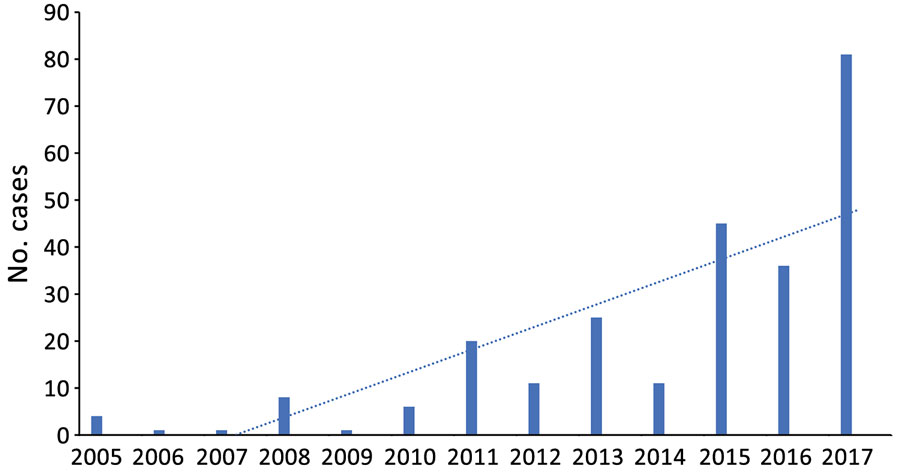Volume 26, Number 8—August 2020
Synopsis
Rise in Babesiosis Cases, Pennsylvania, USA, 2005–2018
Figure 2

Figure 2. Annual number of babesiosis cases reported in Pennsylvania, USA, 2005–2017. Includes confirmed cases during 2005–2010 based on identification of Babesia microti organisms on blood smear and confirmed and probable cases reported during 2011–2017 based on the 2011 Centers for Disease Control and Prevention case definition (https://wwwn.cdc.gov/nndss/conditions/babesiosis/case-definition/2011). Dotted line indicates upward trend of cases over time.
Page created: June 08, 2020
Page updated: July 17, 2020
Page reviewed: July 17, 2020
The conclusions, findings, and opinions expressed by authors contributing to this journal do not necessarily reflect the official position of the U.S. Department of Health and Human Services, the Public Health Service, the Centers for Disease Control and Prevention, or the authors' affiliated institutions. Use of trade names is for identification only and does not imply endorsement by any of the groups named above.